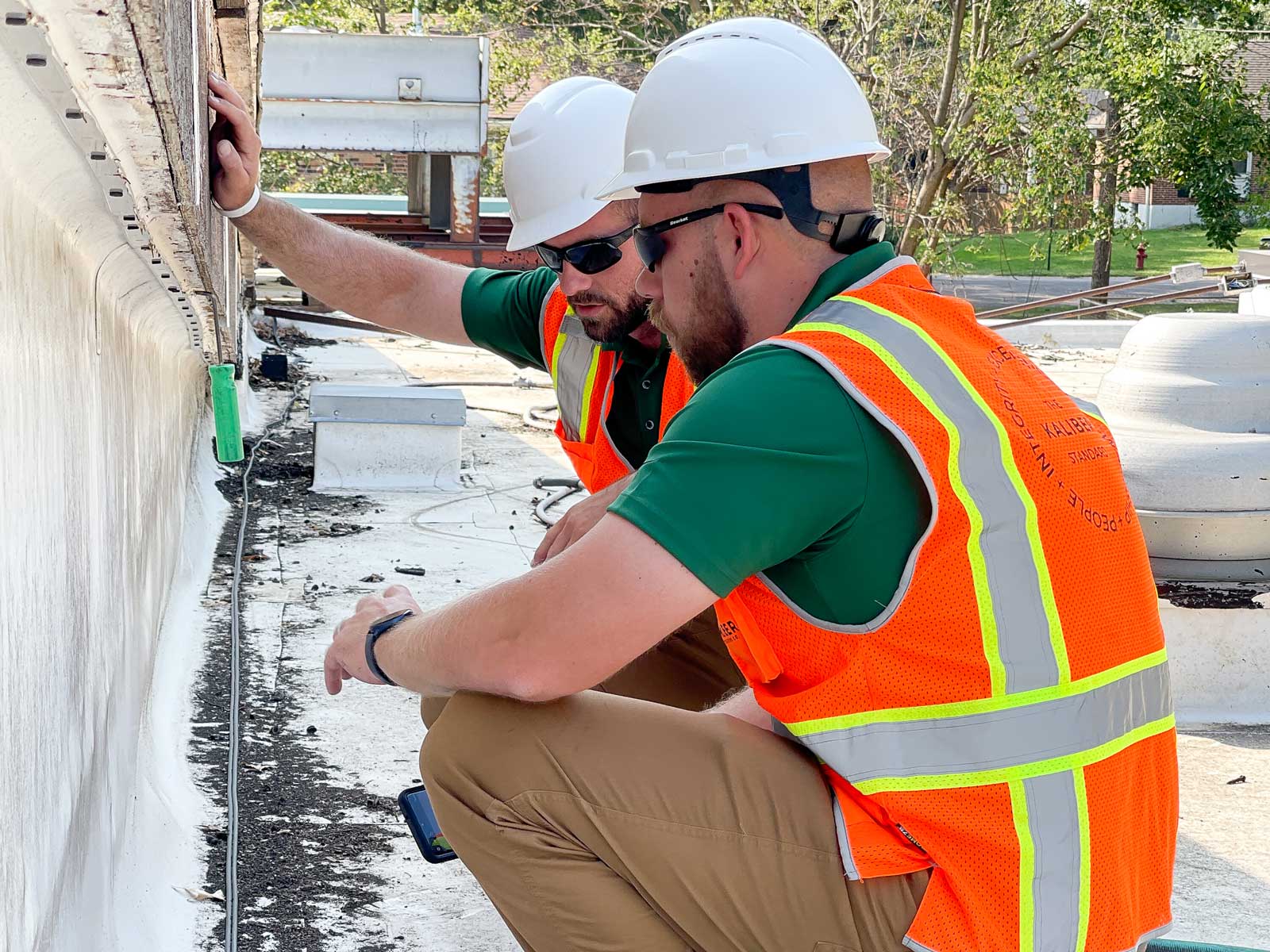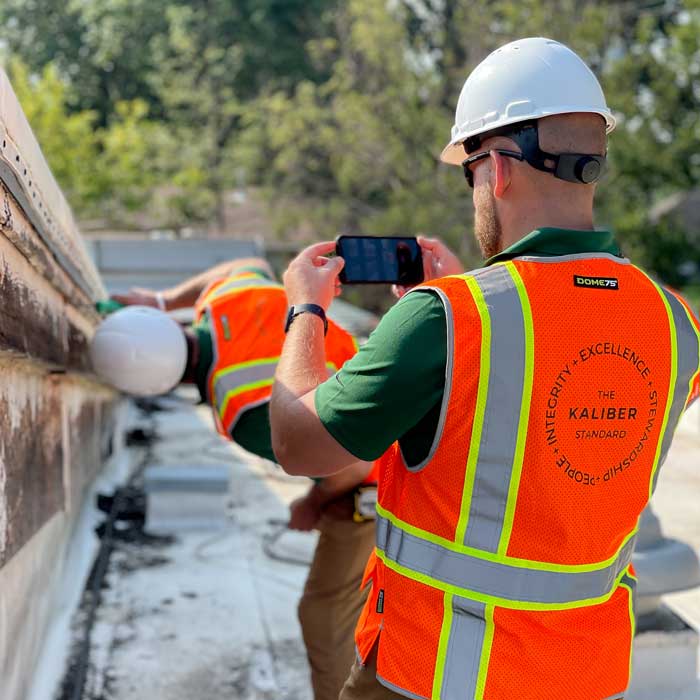Severe weather, debris accumulation, vegetation growth, and UV exposure can have a detrimental effect on commercial roofs. Often, you may not be able to identify any damage until a professional inspection is completed. To ensure the longevity of your roof system, it’s essential to take proactive measures by regularly maintaining and repairing it. This can substantially extend its life cycle and safeguard your investment. If you’re ready to take the first step, schedule a detailed commercial roof inspection today.


It is essential to conduct a thorough inspection of your commercial roof with the help of a reliable roofing specialist. This will provide you with all the necessary information about the current condition of your roof and identify any problems, such as roof leaks, rooftop debris, or clogged drains. It is crucial to address these issues promptly to prevent minor defects from becoming significant expenses later.
It is highly recommended to perform roof inspections twice yearly, specifically in the spring and fall seasons. It is also crucial to assess your roof after severe weather conditions, such as summer storms and hurricanes, which can be very harsh on your facility’s roof. Conducting a thorough roof inspection before and after extreme weather events can simplify the insurance claim process and identify any issues that may result in damage over time.

✔ Inspect the interior of the building first and look for evidence of leaks.
✔ Check drains, gutters, and downspouts to ensure they are free from buildup or debris.
✔ Ensure flashing around the edge of the roof is in good condition.
✔ Check for any growth of algae or moss.
✔ Document roof surface defects, water entry points, and damage.
✔ Identify necessary safety requirements to remain OSHA compliant and specify actionable solutions to help you uphold these standards and regulations.
✔ A roof condition report
✔ Photographs
✔ Suggested scope of work
✔ Construction details
✔ Associated pricing
Ready to start roofing? Contact us today to get your free quote!
Stay up-to-date with Kaliber Contracting and the commercial roofing industry.